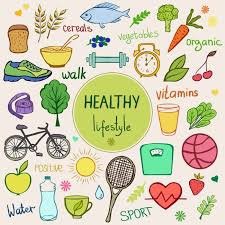Food Additives and Preservatives: A Comprehensive Analysis
This comprehensive guide analyzes food additives and preservatives within the context of food science, public health, and consumer behavior. We will explore their functionalities, safety regulations, health implications, and the evolving landscape of food production and consumption. Key concepts include food additive functionality, regulatory frameworks (e.g., the Delaney Clause in the US), toxicological assessments, consumer perception, and the principles of food preservation.
The Functional Roles of Food Additives and Preservatives
Food additives are substances intentionally incorporated into food products to modify their characteristics. This encompasses a wide array of functionalities, including enhancing palatability (e.g., artificial sweeteners like aspartame and sucralose), improving texture (e.g., emulsifiers such as lecithin and mono- and diglycerides, which stabilize emulsions by reducing surface tension, according to the Gibbs adsorption isotherm), and extending shelf life (preservatives). Preservatives, a specific category of additives, primarily inhibit microbial growth (bacteria, yeasts, and molds), enzymatic activity, and oxidation reactions, significantly extending the product's useful life and reducing the risk of foodborne illnesses, aligning with principles of food microbiology and shelf-life prediction models.
The Necessity of Food Additives and Preservatives in Modern Food Systems
The critical role of food additives and preservatives in modern food systems stems from their ability to maintain food quality, safety, and availability. Their application is vital for global food security, enabling the efficient production, processing, packaging, distribution, and storage of foods across extensive geographical distances and varying climates. Without these substances, significant food spoilage and loss would occur, impacting both economic viability and nutritional access for consumers worldwide. This aligns with concepts of supply chain management and food logistics.
Regulatory Frameworks and Safety Assessments
Stringent regulatory frameworks govern the use of food additives and preservatives globally. Agencies like the Food and Drug Administration (FDA) in the United States and the European Food Safety Authority (EFSA) conduct thorough safety assessments, using models like the benchmark dose (BMD) approach to establish acceptable daily intakes (ADIs) based on toxicological studies. These assessments incorporate principles of risk assessment, considering both acute and chronic toxicity, along with potential interactions between various additives. The process involves rigorous testing and evaluation, adhering to strict guidelines and standards.
Health Implications and Consumer Perception
While the vast majority of food additives are deemed safe at approved levels, concerns regarding potential health impacts persist. These concerns, often amplified by media coverage and public perception, can fuel mistrust and anxieties. However, scientific evidence largely supports the safety of additives when consumed within the defined ADIs. Nevertheless, individual sensitivities and allergic reactions can occur, highlighting the importance of clear labeling and consumer awareness. The application of the precautionary principle often leads to more stringent regulations and stricter monitoring.
Natural versus Synthetic Additives: A Comparative Perspective
Food additives originate from both natural and synthetic sources. The "natural" label can be misleading, as the source doesn’t inherently dictate safety. Both natural and synthetic additives undergo rigorous safety evaluations before approval. The distinction between the two largely rests on the extraction method and processing rather than inherent safety profiles. This distinction often reflects consumer preference and marketing strategies, rather than significant differences in toxicological risk.
Consumer Empowerment through Informed Choices
Understanding food labels empowers consumers to make informed choices. Additives are typically listed by their common names or E-numbers (European Union coding system). This transparency enables individuals to assess the ingredients in products and make decisions aligned with their dietary preferences and health considerations. Consumer education and clear labeling practices are crucial for responsible consumption.
Strategies for Minimizing Additive Intake
Consumers seeking to minimize their additive intake can adopt several strategies. Prioritizing fresh, whole foods and minimally processed products, along with home cooking, significantly reduces exposure to additives. Selecting organic products, often free of synthetic additives, and exploring natural alternatives for flavoring and preservation (such as herbs, spices, and fermentation) are additional effective approaches.
Cultural Variations in Food Preservation and Additive Use
Cultural practices significantly influence food preservation techniques and additive usage. Traditional methods, such as fermentation (kimchi in Korean cuisine) or using natural preservatives (soy sauce in Asian cooking), showcase the diversity of cultural approaches to food preservation and the rich history of using natural resources for food safety.
Future Trends in Food Additives and Preservatives
The future of food additives and preservatives involves a growing emphasis on “clean label” ingredients, consumer demand for transparency, and the development of more sustainable and environmentally friendly preservation technologies. This trend aligns with the broader movement towards more natural and less processed food options.
Conclusions and Recommendations
Food additives and preservatives play an indispensable role in maintaining food quality, safety, and availability in modern food systems. While public perception and concerns regarding health impacts remain valid considerations, rigorous regulatory frameworks and scientific evidence generally support their safety at approved levels. Consumers can minimize their intake by prioritizing fresh, whole foods and minimally processed options. However, a balanced approach that recognizes the important roles of additives in modern food supply chains and consumer choice is essential. Future research should focus on the development of innovative and sustainable preservation technologies that meet consumer demand for clean-label products while ensuring food security and minimizing environmental impacts. This research could explore new preservation methods, including advanced packaging technologies and novel antimicrobial agents, while simultaneously focusing on enhanced consumer education and improved labeling practices to foster trust and facilitate informed food choices. A multidisciplinary approach incorporating elements of food science, toxicology, public health, and consumer behavior is critical for navigating the evolving landscape of food additives and their role in the food system.







